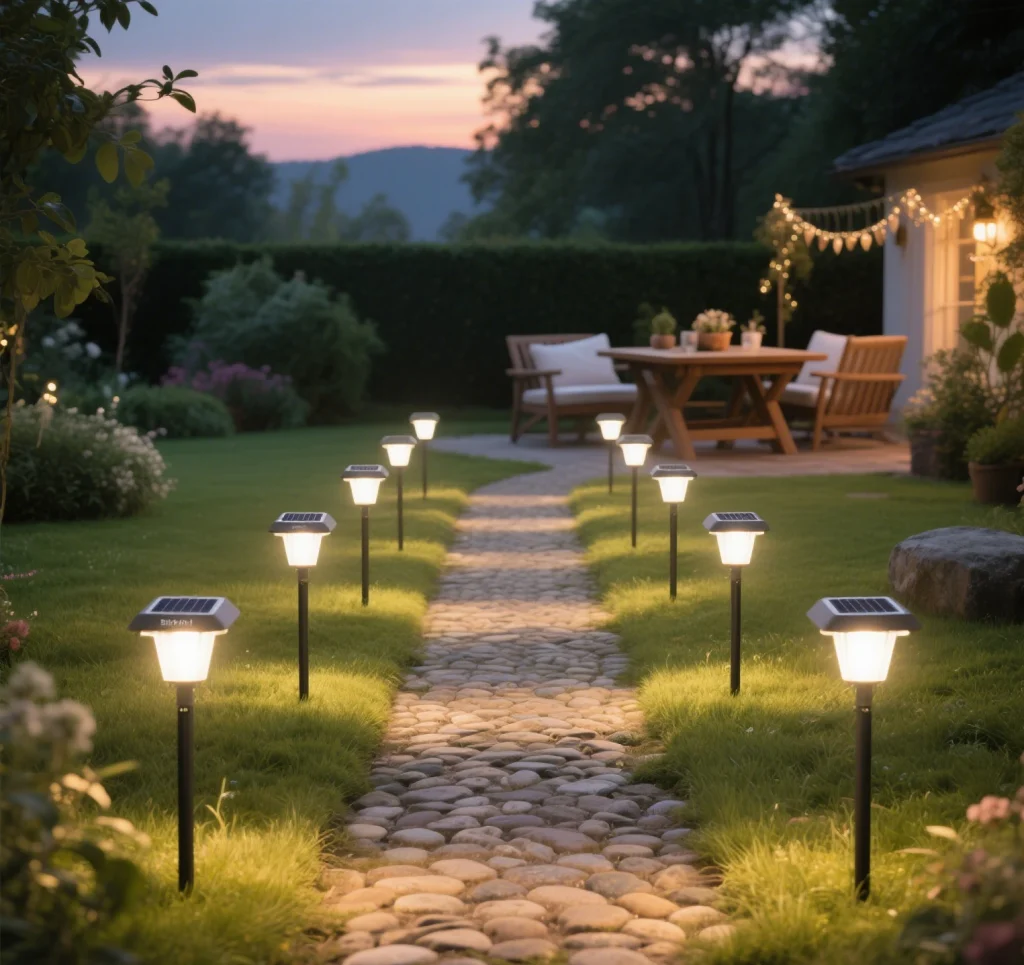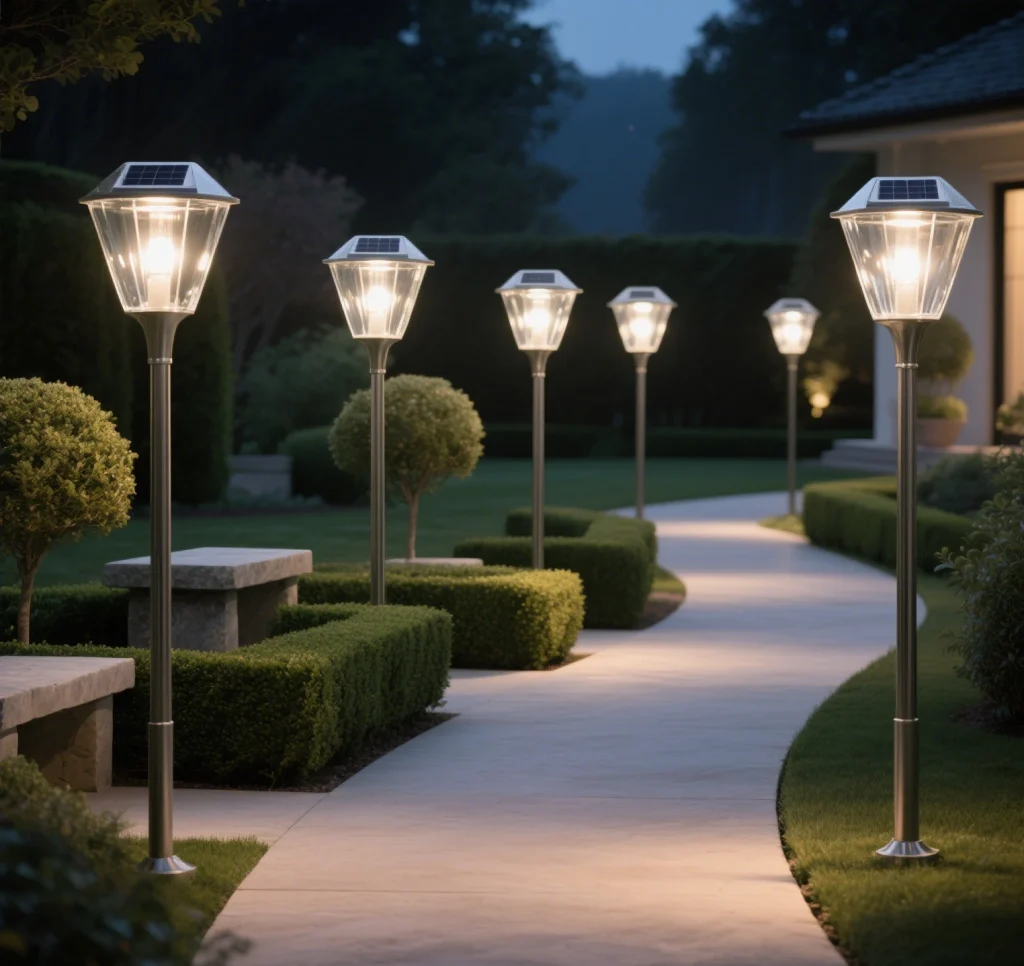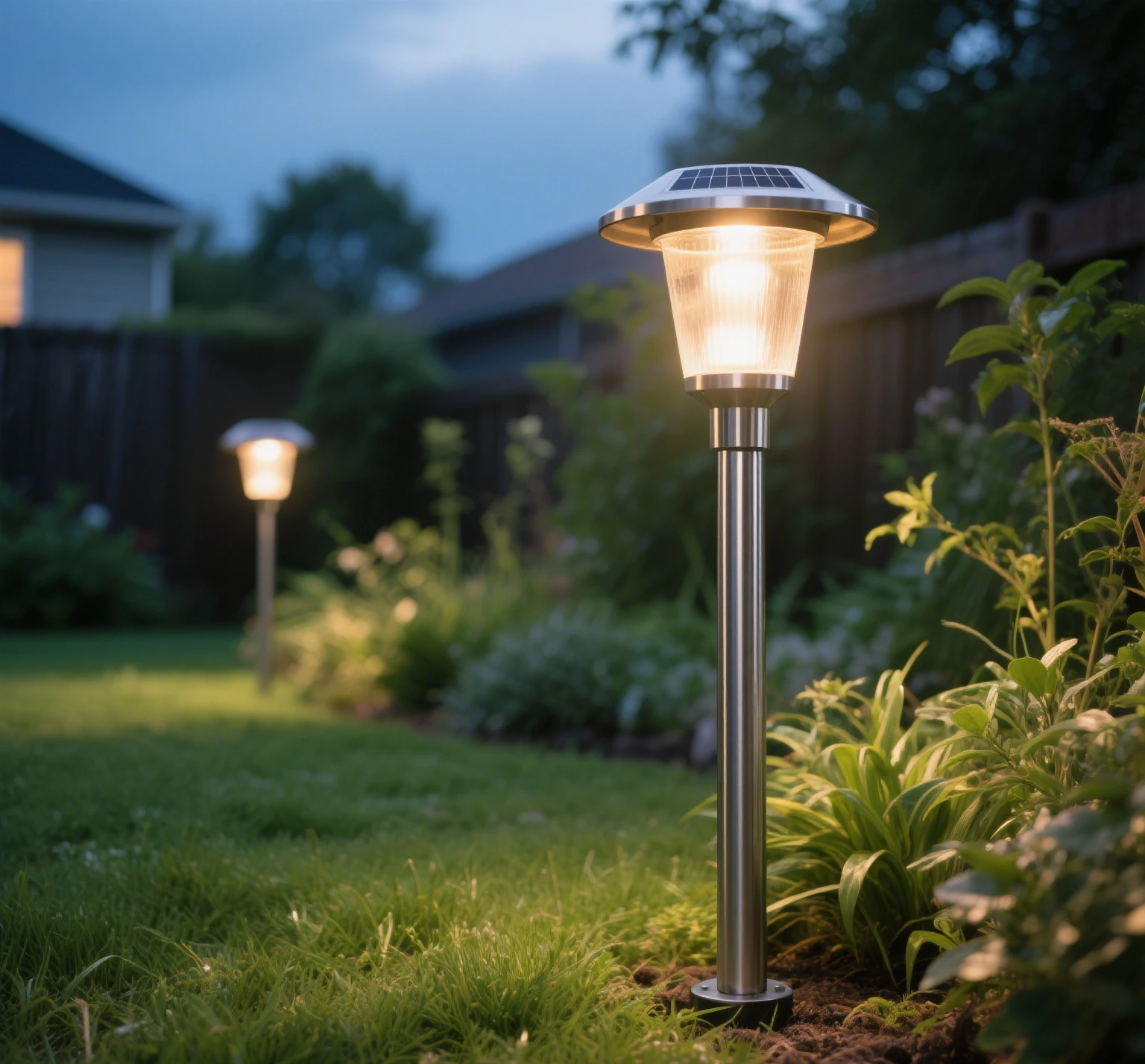Solar garden lights, as eco-friendly and energy-saving outdoor lighting solutions, are gaining increasing popularity among consumers. Whether used for courtyard beautification, pathway lighting, or garden decoration, solar garden lights offer efficient and convenient illumination. However, with the vast array of products available on the market, how do you choose a high-performance, cost-effective solar garden light? This article will provide a detailed analysis of five key aspects—light source, solar battery, controller, lamp pole, and solar panel—to help you confidently select the right product.

1. Light Source Selection: The Efficiency and Durability of LED
When purchasing solar garden lights, the choice of light source is critical. Currently, solar pathway lights typically use LED light sources due to their high brightness, low energy consumption, and long lifespan. LED lamp beads generally have a power rating of 1W, and the overall wattage of the fixture depends on the number of beads. For example, 10 beads of 1W form a 10W fixture. LED light sources not only provide bright illumination but also reduce energy consumption and extend the fixture’s lifespan. When selecting, pay attention to the brightness and color temperature of the fixture—cool white light is ideal for pathway lighting, while warm white light creates a cozy courtyard ambiance. Additionally, high-quality LED light sources offer better heat dissipation, further enhancing the fixture’s durability.
2. Solar Battery: Comparing Lithium and Gel Batteries
The core of energy storage in solar garden lights is the solar battery, with lithium and gel batteries being the most common types. Lead-acid batteries, due to their inferior performance, are rarely used. Lithium batteries are highly favored for their high energy density and long lifespan, with cycle life exceeding 2,000 times and a lifespan 3-5 times longer than gel batteries. Although lithium batteries are more expensive, their portability and efficiency make them the preferred choice for high-end solar garden lights. In contrast, gel batteries are more affordable, suitable for budget-conscious consumers, but their lifespan and performance are slightly inferior. When choosing, consider the usage scenario and budget, and ensure the battery capacity meets nighttime lighting needs.
3. Controller: The Intelligent Core of Solar Garden Lights
The controller serves as the “brain” of solar garden lights, managing charging, discharging, lighting duration, and the voltage of the supply current. A high-quality controller optimizes charge-discharge efficiency, extending the lifespan of both the battery and the fixture. For instance, advanced controllers feature light and time control functions, automatically adjusting brightness based on ambient light to achieve energy-efficient lighting. Additionally, the controller’s waterproof performance and stability are crucial, especially in variable outdoor weather conditions. When purchasing, opt for controllers with overcharge and over-discharge protection to ensure long-term stable operation of the solar pathway light.

4. Lamp Pole Design: Balancing Aesthetics and Functionality
The lamp pole of a solar garden light is not only a structural support but also impacts the overall aesthetics and lighting effect. The height and design of the lamp pole are key factors to consider during purchase. Generally, taller poles provide a broader lighting range but come with a higher cost. For example, 3-5 meter poles are suitable for courtyard pathway lighting, while poles over 6 meters are better for spacious outdoor areas. Lamp pole designs vary widely, with minimalist modern styles fitting urban courtyards and vintage styles complementing gardens or rustic settings. Additionally, the pole’s material—such as aluminum alloy or stainless steel—affects its corrosion resistance and lifespan. Choose weather-resistant materials to withstand outdoor conditions.
5. Solar Panel: Choosing Between Monocrystalline and Polycrystalline
The solar panel is the energy source for solar garden lights, and its performance directly determines charging efficiency. Solar panels are mainly divided into monocrystalline and polycrystalline types. Monocrystalline solar panels are known for their high photoelectric conversion efficiency and stability, reaching up to 20% efficiency, with a longer lifespan, making them the mainstream choice for solar pathway lights. However, monocrystalline panels are relatively expensive. Polycrystalline solar panels are more affordable but have slightly lower conversion efficiency, typically between 15-17%, making them suitable for budget-conscious scenarios. When selecting, choose the panel’s power based on the installation area’s sunlight conditions and size—larger areas require higher power. Regular cleaning of the panel surface to ensure efficient sunlight absorption is also key to extending the fixture’s lifespan.
Buying Tips: Comprehensive Consideration and Quality Focus
When purchasing solar garden lights, in addition to focusing on the five core components mentioned above, consider the usage scenario, budget, and brand reputation. For smaller courtyards, a 3-5W fixture paired with a medium-capacity lithium battery may suffice, while larger outdoor areas require higher-powered fixtures and panels. Moreover, high-quality solar garden lights often come with reliable after-sales services. For instance, well-known brands like Bitpott offer warranty policies that provide added assurance for consumers. Before buying, check user reviews to understand the product’s real-world performance and avoid choosing low-quality products due to low prices.
Conclusion
Solar garden lights, with their eco-friendly, energy-saving, and easy-to-install features, are an ideal choice for outdoor lighting. By understanding the key aspects of light source, solar battery, controller, lamp pole, and solar panel, you can make informed decisions to select a product that meets your needs. Whether adding a warm glow to your courtyard or providing safe pathway lighting, a high-quality solar pathway light can bring convenience and beauty to your life. We hope this buying guide offers practical insights to help you effortlessly choose a high-performance solar garden light!

Comments